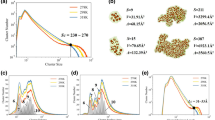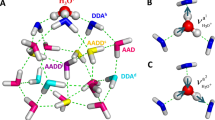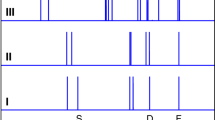Abstract
THERE is considerable current interest in the possible existence of a new form of water reported by Deryagin1, not only because of the universal presence of water, but also because it would almost certainly require a new type of chemical bond. The oldest and simplest schematic representation of the electronic distribution in molecules is the dot diagrams of Lewis2, and the usefulness of this description has been greatly enhanced by Linnett's3 replacement of a single dot by the two symbols, “x” and “o”. These correspond to the two different electron spin states and accommodate the independent effects of charge and spin correlation. The possibility of delocalizing a pair of electrons with opposite spins, not recognized by Lewis, makes a significant contribution to the hypothesized bonding scheme given here. Models such as this cannot predict whether or not the new material exists nor can they uniquely point to the most probable structure, but their inherent simplicity and suggestive pictorial description can be a very powerful aid in interpreting experiments.
This is a preview of subscription content, access via your institution
Access options
Subscribe to this journal
Receive 51 print issues and online access
$199.00 per year
only $3.90 per issue
Buy this article
- Purchase on Springer Link
- Instant access to full article PDF
Prices may be subject to local taxes which are calculated during checkout
Similar content being viewed by others
References
Deryagin, B. V., and Churayev, N. V., Priroda, 4, 16 (1968) (Translation in Joint Pub. Res. Sev., No. 45, 989, 45989, US Department of Commerce, July 25, 1968).
Lewis, G. N., J. Amer. Chem. Soc., 38, 762 (1916).
Linnett, J. W., J. Amer. Chem. Soc., 83, 2643 (1961) and Electronic Structure of Molecules (Methuen, London, 1964).
Kollman, P. A., and Allen, L. C., J. Chem. Phys., 51, 3286 (1969).
Lippincott, E. R., Stromberg, R. R., Grant, W. H., and Cessac, G. L., Science, 164, 1482 (1969).
Page, T. F., Jakobsen, R. J., and Lippincott, E. R., Science, 167, 51 (1970).
Petsko, G. A., Science, 167, 171 (1970).
Allen, L. C., and Kollman, P. A., Science, 167, 1443 (1970).
Author information
Authors and Affiliations
Rights and permissions
About this article
Cite this article
ALLEN, L. A Bonding Model for Anomalous Water. Nature 227, 372–373 (1970). https://doi.org/10.1038/227372a0
Received:
Issue Date:
DOI: https://doi.org/10.1038/227372a0
This article is cited by
-
Zum Problem ?Polywasser?
Die Naturwissenschaften (1973)
-
Polywater and Polypollutants
Nature (1971)
Comments
By submitting a comment you agree to abide by our Terms and Community Guidelines. If you find something abusive or that does not comply with our terms or guidelines please flag it as inappropriate.



